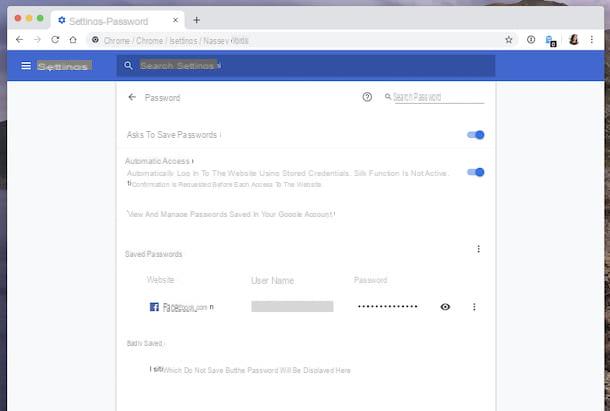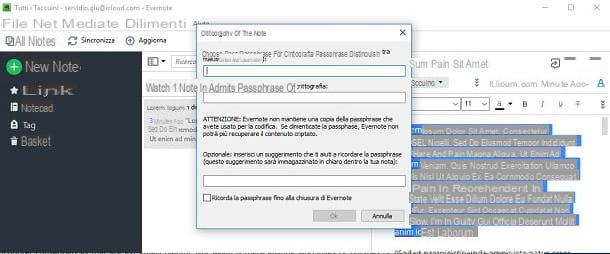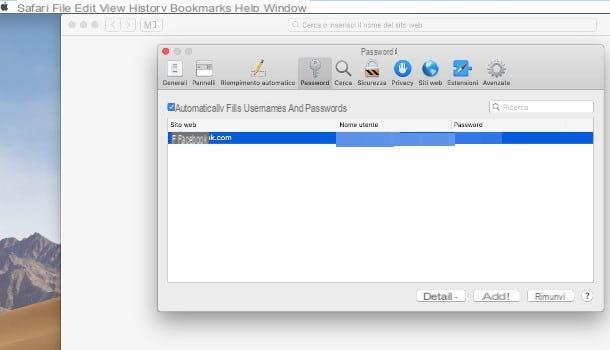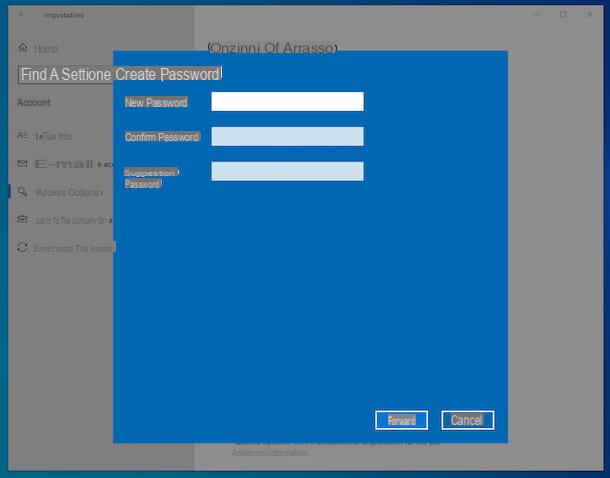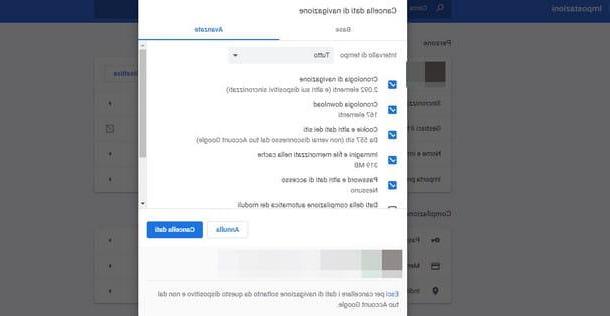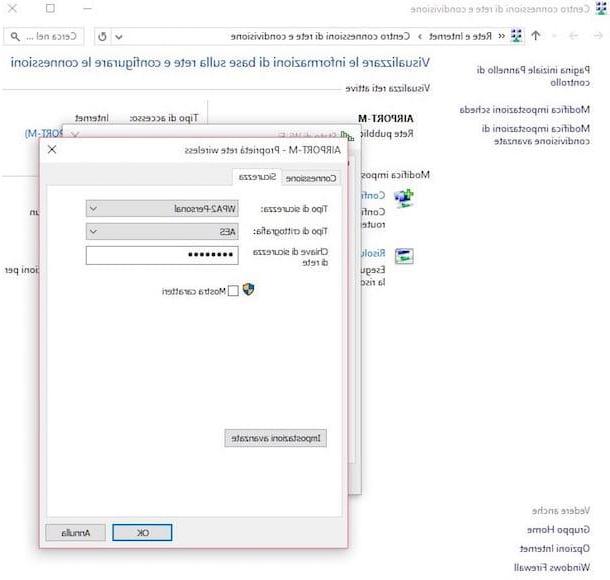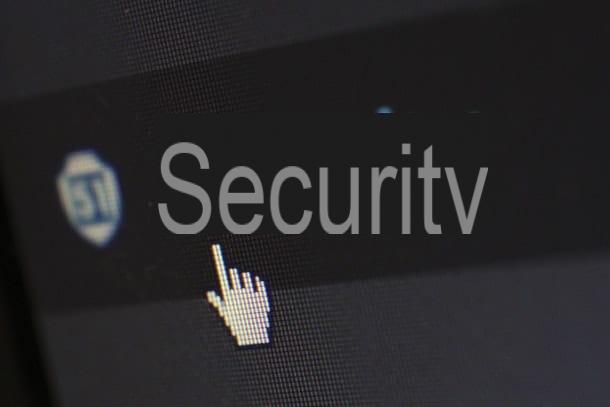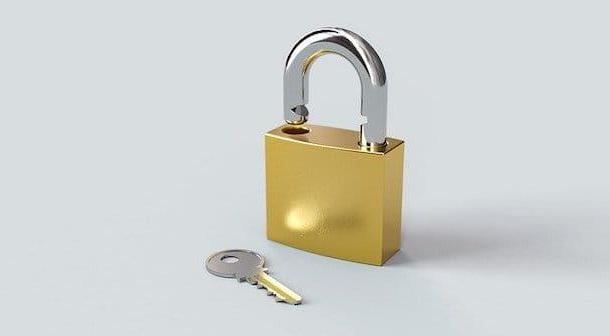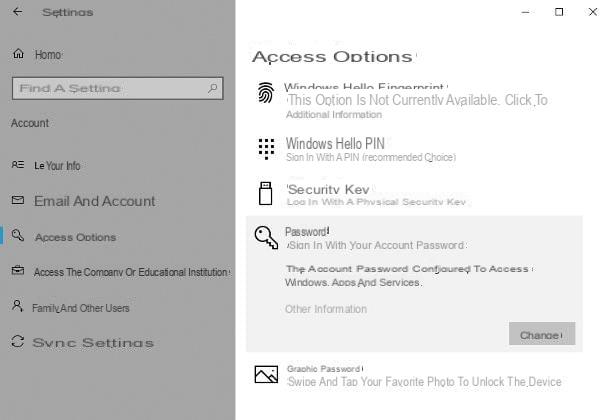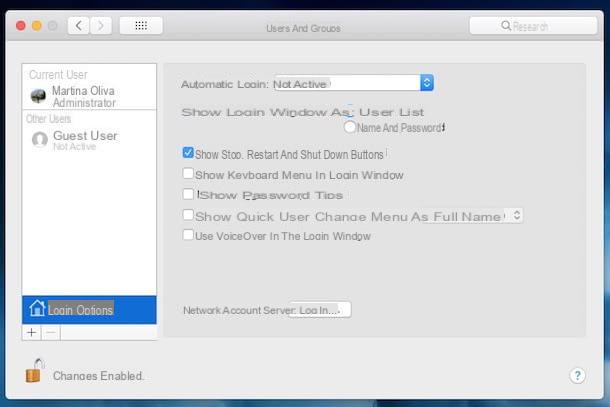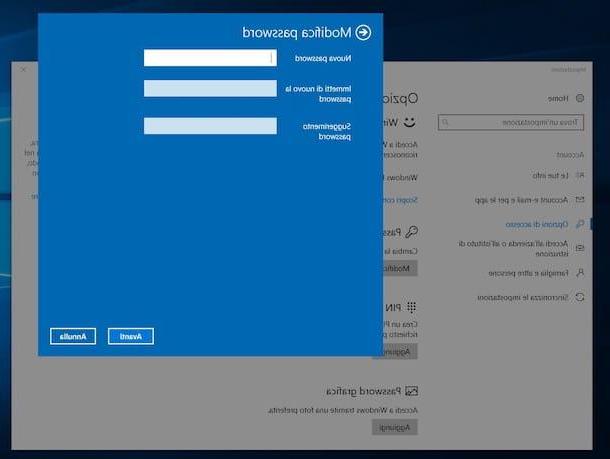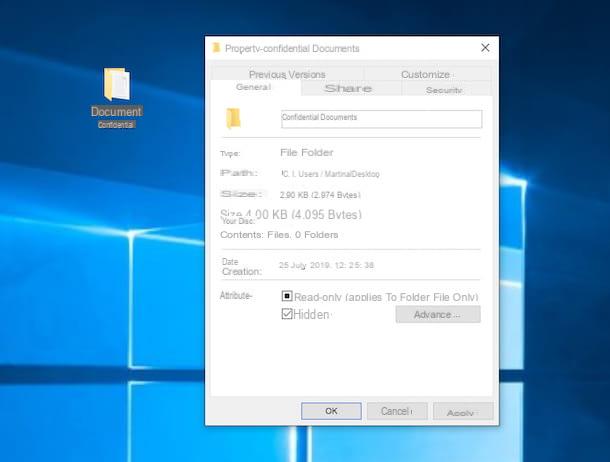How to choose the right password

Managing passwords efficiently is useless if you don't use them secure passwords and you don't have any good habits in terms of IT security. Before getting to the heart of the tutorial, let me point out some "rules" on how to choose the right passwords and how to behave when you have to create or manage an online account.
- Use a long, hard-to-guess password - passwords must not have a complete sense (as with special dictionaries they would be very easy to identify, even if long), they must be composed of at least 15-18 characters and must contain lowercase letters, uppercase letters, numbers and special characters ( e.g. exclamation marks, asterisks or parentheses). If you want to make your life easier, you can generate secure passwords using the password management programs I am about to recommend.
- Don't use the same password on multiple sites, apps, or services - using the same password on more than one site, service or app is a real suicide in terms of IT security. This is because any password discovery on one account would make other accounts using the same password easily attackable.
- Say so much in so much, change your password - regardless of their degree of security, passwords should be changed frequently (every couple of months for example). This simple habit complicates the life of any malicious persons and, in the event of attacks on the sites or online services to which you are registered, it will allow you to keep your account safe (as the leaked password will no longer correspond to the access password of the your account).
- Enable two-factor authentication - now many sites and online services, such as Google, Facebook, Microsoft, Apple etc. offer the ability to enable two-factor authentication. If you've never heard of it, two-factor authentication is a security measure that allows you to associate temporary security codes with your account passwords. After activating it, to access your account from a new device or a new browser, you will need to enter not only the password of your account, but also a disposable security code received via SMS. This means that even by stealing your password, malicious people will not be able to access your accounts because they are protected by codes that only you will receive on your mobile phone.
Programs to manage passwords
If you want to manage your accounts in an easy, safe and comfortable way, take my advice and install a program for manage passwords. If you have never heard of them, these are programs that, once installed on the PC, allow you to manage access data to online services, Internet sites and apps, keeping them in an encrypted database. This means that by remembering only one password (the so-called master password) you can quickly access the passwords of all your online accounts. And it doesn't stop there! By installing a password manager, you will also have the ability to securely store information such as your credit card information, identity card number and much more.
Another thing worth pointing out is that most of these programs are multi-platform e muti-device. This means that you can synchronize your passwords on PCs, smartphones and tablets, always keeping your data safe and having the ability to change them from any device and operating systems. How much does this "magic" cost? Well it depends. There are completely free solutions, some for a fee and some freemium, which can be used for free but include extra features that can be unlocked for a fee. Below I point out some of them that belong to all three categories.
1Password (to pay)
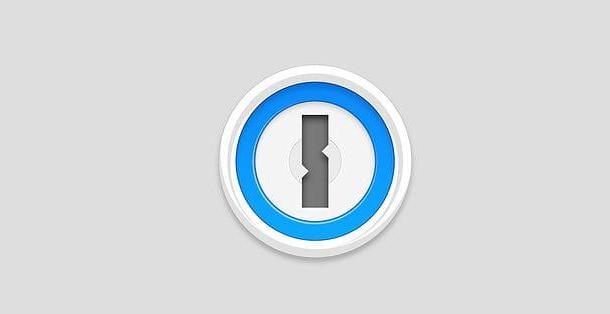
If you are willing to spend some money to manage your passwords, don't think twice and buy 1Password which in my humble opinion is one of the best password managers currently available on the market. Unfortunately it's not very cheap, but it offers ease of use, security and a host of features that make it worth every penny of what it costs. It allows not only to store passwords, credit card data and other information securely, but also to keep files (synchronizing them on multiple devices through the cloud) and create separate safes for multiple users or activities. It is compatible with Windows, MacOS, Android, iOS and integrates with all major ones Web browser in order to automatically save and fill in your login information. Data synchronization can take place via 1Password servers (recommended), Dropbox or iCloud (if using Apple devices).
At the moment it is possible to buy 1Password choosing between two different ways: that standard which involves the purchase of a single version of the software, for example the one for Mac or the one for Windows, at a one-off price and the one in subscription (which I personally recommend), which in exchange for $ 3,99 / month or $ 35,88 / year allows you to use the application on Windows, macOS, Android, iOS or via browser, to take advantage of free updates and store up to 1GB of data on the cloud. The subscription plan is also available in a version Family: in this case it costs $ 4,99 / month (to be paid in a single annual payment), offers the functions of the single plan, some data sharing functions and can be used by up to 5 people. Both versions can be tried for free for 30 days.
To download 1Password for Windows or macOS, connect to the official website of the program and click on the button Download related to the operating system installed on your computer. Then, if you are using a Windows PC, open the software installation package (1PasswordSetup-xx.exe) and first click on Next and then Yes to complete its installation on your computer. If you're using a Mac instead, open the dmg package which contains 1Password, drag its icon to the folder Applications macOS and launch the program by double clicking on it.
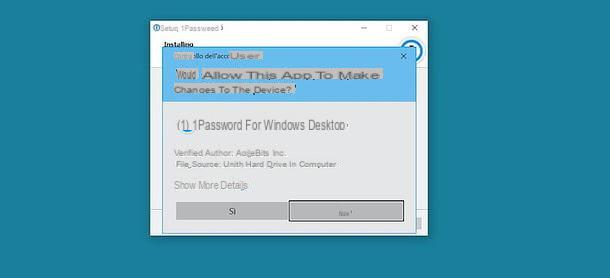
Now you need to create an account to use 1Password and sync your data to the cloud. Then click on the button Try it free present in the initial window of the program, type your email address in the Web page that opens and presses the button Continue.
Then open your e-mail box, select the message you received from 1Password and click on button for account verification. On the web page that opens, enter name, last name and if you want one profile photo; click on the button Continue and enter i credit card details to pay for the 1Password subscription at the end of the 30-day trial. If you want to proceed with the account creation without entering the payment information, click on the item Skip adding a card which is located at the bottom right.
Finally, save yours secret key (an alphanumeric code that you will need to access 1Password from new devices or browsers) in a safe place, click on the button I've got safe and create your own master password, that is the password with which to access all the passwords and all the other information that you will save in 1Password. Once the master password has been created, log into your 1Pasword account by entering the newly created master password and your account will be officially activated.
You will be asked if you want to print the emergency kit to access your account in case of loss of access data, you choose whether to accept or not (but in any case I recommend that you print this document as soon as possible).
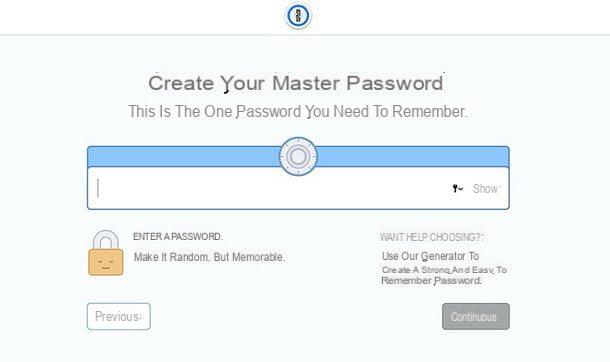
Once you have created your account and obtained the secret key, you can access all 1Password applications using your account data. All passwords, information and files that you save in the latter will be automatically synchronized on all devices via the cloud.
As already mentioned above, 1Password integrates seamlessly with all major web browsers, such as Chrome, Firefox e Safari. Just start any browser program and accept the installation of the 1Password extension. At that point the add-on will automatically "capture" the login details of all websites and ask you if you want to store them. To add a password or other information to 1Password "manually", however, you have to start 1Password, unlock your safe by typing the master password and pressing the button [+] which is located at the bottom right.
So choose whether to add new ones to 1Password login data, A new credit card, a sure note or another element and fill in the form that is proposed to you with the data you want to keep in the program.
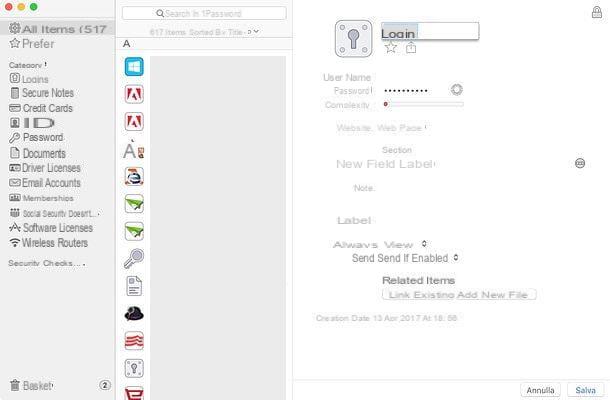
To use 1Password on smartphones and tablets, all you have to do is install the official application of the service (Android or iOS / iPadOS) and access it using your account data. If your device has a fingerprint sensor, after the first login you can access your safes simply by using your fingerprint.
KeePass (free)

KeePass is an excellent free and open source password manager compatible with all devices and operating systems. It is extremely reliable, but I personally tend to recommend it only to slightly more experienced users. This is because it has some manual configurations and is available in so many versions that novice users may find it a bit distracting. To better understand what I am referring to, I tell you that it does not automatically synchronize data with the cloud but you have to save its safes "manually" on cloud storage services, such as Dropbox. Then it does not have official extensions for the browser, but you have to find your favorite extension among the many available on the Chrome Store, Mozilla Add-ons etc.
If you feel like trying KeePass and use a Windows PC, connect to the program's website and click on the button Download Now which is on the left, under the heading Installer if you want to download the standard version of the software, or under the heading Portable if you want to download the portable version that does not require installations to work (the software will be installed in English, to translate it into cittàn you will need to download this file and unpack it in the folder where you installed KeePass). If you are using a Mac instead, download KeePassX which is one of the best versions of KeePass available for macOS.
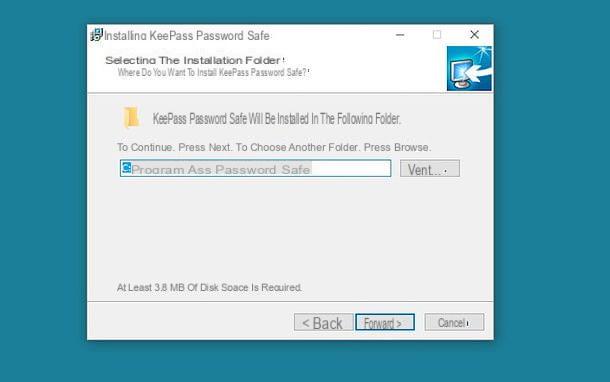
After installing KeePass, open the application and go to the menu File> New to create your safe. Then type the master password with which you want to protect access and click on the button OK to start populating your safe with access data to sites, social network apps, etc.
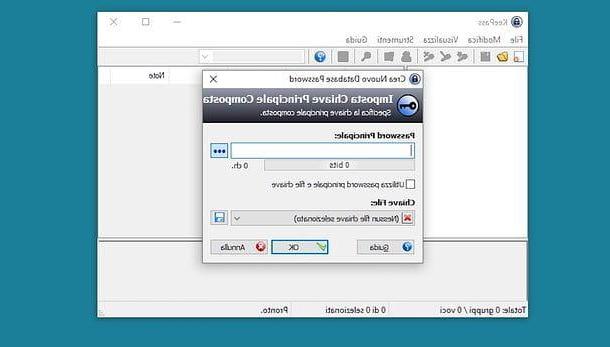
To add an item to the KeePass safe, select one of the categories listed in the left sidebar (ex. Internet o Email) and click on the button key which is located at the top left. Then fill out the form that is proposed to you with the data you want to keep, press on OK to save and that's it.
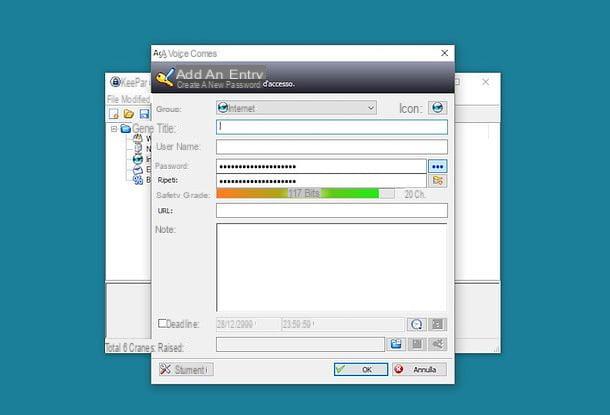
To save your KeePass safe, go to the menu File> Save with nome and choose the folder to export the file to. If you save the file in the dropbox or another cloud storage service, you will have the ability to synchronize your login data across multiple devices.
In this regard, I would like to point out that on this page you will find the list of all the apps to use KeePass on Android, iPhone and Windows Phone, while on this other page you will find the list of extensions and plugins that allow you to use KeePass in web browsers. .
If you want to make your life easier, you can also open the store of your smartphone or browser and search "Keepass" in this last. You should find the apps and extensions dedicated to KeePass quite easily.
Manage passwords in the browser
As you surely know, all modern web browsers, such as Chrome, Firefox e Safari, include a function for automatic saving of passwords and their synchronization on all devices. This is an extremely useful feature, but if you decide to use a password manager, I'd say you can do without it. So here are some quick instructions on how to activate, deactivate or manage the saving of passwords in all the main online navigation programs.
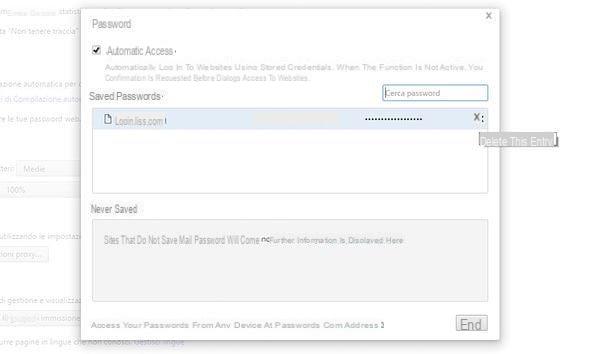
- Chrome - if you want to manage the passwords stored in Chrome, click on the button (...) che si trova in alto a destra e seleciona la voce Settings from the menu that appears. Then scroll the page that opens up and at the bottom, click Show advanced settings e seleciona il collegamento Manage passwords which appears below. At this point you can view all the passwords stored in the browser and delete them if necessary. To completely disable saving passwords in Chrome, go to Settingsclick your Show advanced settings and uncheck the item Request to save your web passwords.
- Firefox - if you use Firefox, you can view the list of passwords stored in the browser by clicking on the button ≡ che si trova in alto a destra e selecionando la voce options o Pref Renze from the menu that appears. After that you have to go up Safety e pigiare sul pulsating Logins saved. If you want to disable the password saving function, go to Options> Security and uncheck the option Remember the access data to the sites.
- Edge - on Windows 10, the passwords stored in the Edge browser can be viewed (and possibly deleted) by pressing the button (...) located at the top right and selecting the item first Settings, then the button Visualizza impostazioni advance and finally the option Manage saved passwords from the bar that appears on the side. To disable password saving, you must move the lever of the relevant option in the menu to OFF Settings> View advanced settings.
- Safari - if you have a Mac, you can check the passwords saved in Safari by going to the menu Safari> Preferences (top left) and selecting the tab Password from the window that opens. Then type the password of your user account on macOS in the appropriate text field, press Submit and you will have the ability to manage passwords save in Safari. If you want to disable password saving, uncheck the option Autofill usernames and passwords.
- Internet Explorer - to manage passwords stored by Internet Explorer, you need to open the classic control panel Windows (by looking for it in the menu Home), after which you need to search for the term Password in the bar located at the top right and you have to click on the icon Manage credenziali present in the search results.




